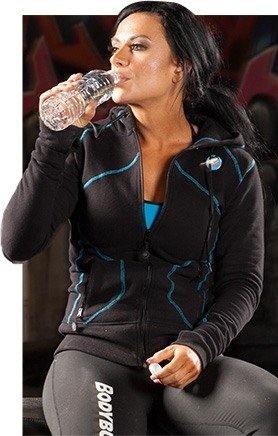Q
Dear Ripped Dude, how can I stay consistently ripped? I'm tired of losing weight only to gain it back. How can I end the cycle?
If you're looking to get ripped with marketing gimmicks, don't bother: They're mostly hogwash. The quick-fix tricks you see touted as cure-alls on the Internet or spewed on television infomercials by so-called fitness experts aren't going to work. They're going to keep you on a roller coaster ride of weight loss and gain.
Staying in tip-top shape year-round requires hard work and discipline. Of course, many factors come into play and shape each individual's success, but some factors are more important than others. Here are the key ones—and what you can do to master them.
1
Fueling Your Body
Genetics play an integral part in how hard each person has to work to stay consistently lean and ripped. Your body type and metabolism dictate how often you have to train and which exercises are best suited for your muscle building or fat-loss goals. For naturally thin ectomorphs—who are characterized by a low body fat percentage, small bone size, and high metabolism—a high-calorie diet is essential. To fuel muscle growth, aerobic activity should be kept to a minimum.
For muscular, athletic mesomorphs, a diet of lean protein, slow-digesting carbs, and healthy fats—combined with moderate aerobic activity—will help prevent body fat gains. Endomorphs can fend off fat gains with lean protein and minimal carbs.
2
Train Smart
While body type partially dictates how hard you have to work on diet and training to stay ripped, training smart is something everyone can benefit from. I'm an advocate of mixing high-intensity interval training (HIIT) 2-3 times per week with low-intensity steady-state cardio (LISS) once or twice each week. Since HIIT is taxing, I don't recommend doing it every day. Having a rest day in between workouts allows my body a full day of active recovery, which is where LISS comes into play.

For me, a typical HITT treadmill workout includes 5-7 minutes of warm-up to get the blood flowing followed by a 25-minute workout of 20 seconds on, 20 seconds off. When I'm "on," I go all out at an 8 or 9 mph pace. Then I walk for 20 seconds at a 3.0 pace.
On a lighter day of LISS cardio, I typically go for a 3 or 4-mile trail or road run. I keep a slow pace and aim for a 9-10-minute mile.
3
Follow THE 90/10 Rule
When you're on a clean diet, it's hard to stay disciplined 24/7. Healthy eating seven days every week isn't always possible, which is why having a cheat meal or two during the week is important. Consider it a necessary pause—a chance to satisfy a craving that, if ignored, could lead to major dietary sabotage. I believe in the 90/10 rule: Eat clean 90 percent of the time, indulge for the other 10 percent.
Cheat meals take care of much more than cravings; they're important for your psyche. According to nutrition expert Alan Aragon, M.S., as long as you follow your meal plan 90 percent of the time you can—and should—include one or two "free meals" each week to stay sane. A slice of pizza or a small hamburger will make a fine choice. Just remember: It's a cheat meal, not a cheat day.

4
Keep Your Appetite Under Control
Changing your diet can be tough—especially when you're accustomed to eating sugar-fueled junk food. To suppress your appetite throughout the day, drink more water. Aim for at least eight glasses per day. Try drinking a glass of water before each meal for an extra sense of fullness. Aside from keeping your thirst quenched, studies have shown that downing some quality H2O before meals can result in consuming fewer calories and lead to weight loss.
Pile on the produce. Eating high-fiber fruits and vegetables with your meals or as an in-between snack can help you feel fuller longer and curb your appetite, which means you'll be less tempted to reach for food that's a fat-filled nutritional zero.
5
Monitor Your Progress
When it comes to motivation, mirrors can work magic. Skip the scale and gauge your progress by checking out your reflection. Scales can be skewed and don't measure a loss of body fat. Stop focusing on the number in front of you and instead think about how your clothes fit. Really looking to hone a fit physique? Monitor changes more accurately by checking your body fat every few weeks.


